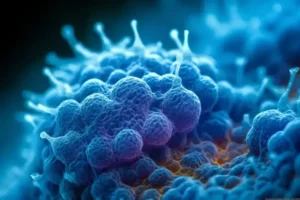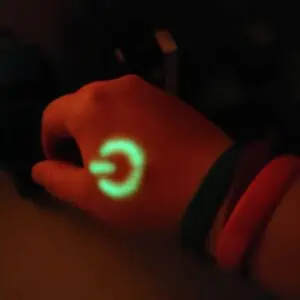Recently James Webb Telescope revealed never before seen view of the star-forming region of the Carina Nebula called “Cosmic Cliff”.
Table of Contents
ToggleBefore going to explain and discussing the “Cosmic Cliff” image of the James Webb Telescope to earth, it is important to know about the main role player of the Webb Telescope, due to which we are analyzing the given images.

There is not much more data about “Cosmic Cliff” on the internet to get a clear idea about this newly discovered star birth process. For our readers, here we are presenting details about the “cosmic Cliff” after a lot of research.
The James Webb Space Telescope is fitted with two types of infrared cameras; Near-Infrared Camera (NIRCam) and Mid-Infrared Instrument (MIRI).
The Near-Infrared Camera operates over an infrared wavelength range of 0.6 to 5 microns, whereas Mid-Infrared Instrument operates over a wavelength range of 5 to 28 microns.
Near Infrared Camera (NIRCam) of the James Webb Telescope
The Near Infrared Camera (NIRCam) is the primary camera of the James Webb telescope for imaging and it covers the infrared wavelength range of 0.6 to 5 microns.
The NIRCam detects light that travels from the earlier stars and galaxies in the process of formation, young stars in the Milky Way and Kuiper Belt objects, as well as the population of stars in nearby galaxies.
It is equipped with a coronagraphs instrument, which helps astronomers to capture pictures of very faint objects around a central bright object, like stellar systems.
Just like us, the coronagraph shielded his eyes with an upraised to focus and see the brighter objects. That means it works by blocking the brighter object’s light for making it possible to view the dimmer object nearby.

Mid-Infrared Instrument (MIRI) of James Webb Telescope:
The Mid-Infrared Instrument (MIRI) consists of a camera and a spectrograph and covers a wavelength range of 5 to 28 microns.
The longer wavelength of light comes under the mid-infrared region of the electromagnetic spectrum which can’t be seen by our eyes but can see by this instrument.
It consists of a sensitive detector, which detects the redshifted light of distant galaxies, faintly visible comets and objects in the Kuiper Belt, and newly forming stars.
Near Infrared Spectrograph (NIRSpec)
The Near InfraRed Spectrograph (NIRSpec) operates over a wavelength range of 0.6 to 5 microns.
It consists of a spectrograph (also called a spectrometer), which is used to disperse light from an object into a spectrum.
The atoms and molecules present in the object uniquely imprint lines on its spectrum and analyzing this spectrum gives us the physical properties like mass, temperature, and chemical composition of that object.
The NIRSpec is the first spectrograph in space that has this remarkable multi-object capability. During its 5-year mission, it is designed to study thousands of galaxies along with observing 100 objects simultaneously.
It has started its journey to find out the first galaxies formed after the Big Bang and the lights will be so faint, however, in order to collect enough light to form a spectrum, the giant mirror of Webb must stare at them will take hundreds of hours.
NIRCam Image of Webb Telescope revealed “Cosmic Cliffs” in the Carina Nebula
Recently, the Near-Infrared Camera (NIRCam) of the James Webb Space Telescope NASA captured the formation of young stars and their dusty, planet-forming disks and the atmospheric composition of exoplanets.
These invisible areas of star birth images reveal the emerging stellar nurseries, in which gas and dust are continuously contracting, resulting in the formation of new stars and individual stars in the Carina Nebula.
Moreover, the image depicts the much craggy mountains on a moonlit evening is actually the edge of a nearby, young, star-forming region NGC 3324 in the Carina Nebula.
You May Also Read: How James Webb Telescope image revealed the hidden mysteries!
Carina Nebula and NGC 3324
The Carina Nebula is a large, complex area of dark and bright nebulosity in the constellation Carina.
It is located approximately 8,500 light-years from Earth in the Carina–Sagittarius Arm of the Milky Way galaxy.
Whereas the NGC 3324 is an open cluster in the southern constellation Carina, located northwest of the Carina Nebula (NGC 3372) at a distance of 9,100 light-years from Earth and is situated in the northwest of the Carina Nebula.
Recently Webb Telescope revealed a picture of an early star-forming region of NGC 3324 called the Cosmic Cliffs.

NIRCam and MIRI Camera Composite Image of “Cosmic Cliffs” in the Carina Nebula

This image depicts never before seen view of the star-forming region of the Carina Nebula and is produced from the combination of NIRCam and MIRI cameras of the Webb telescope.
You May Also Read: Best Five Star-Projectors: Bringing the Cosmos into Your Home
Sonification of Cosmic Cliffs image of Webb Telescope in the Carina Nebula
Sonification is the process of translation of data into sound. Two musicians were assigned for this purpose and they mapped the Webb telescope’s data to sound.
The sonification of the recently revealed Cosmic Cliff image of the Webb Telescope scans the image from the left side of the image and moves to the right, with a symphony of sounds representing the position and brightness of the sources.
The soundtrack produced after sonification represents the gigantic, gaseous cavity, that has appeared as a mountain range in detail.
The gas and dust in the top half of the image, which are represented in blue hues and windy show drone-like sounds, whereas the bottom half of the image has a clear and more melodic composition, which is represented in ruddy shades of orange and red.
As the brightness of the light increased, the sound increased with a high pitch near the top of the image but the bright light near the middle is loud and low pitch.
The dust-obscured areas, that appeared lower in the image are showing lower frequencies and clearer due to dimmer light.
The soundtrack produced after sonification does not represent sounds recorded in space.
You May Also Read: Put Some Nanoparticles into Your Personal Care Products















